Technology
This Fan Edition is a Winner
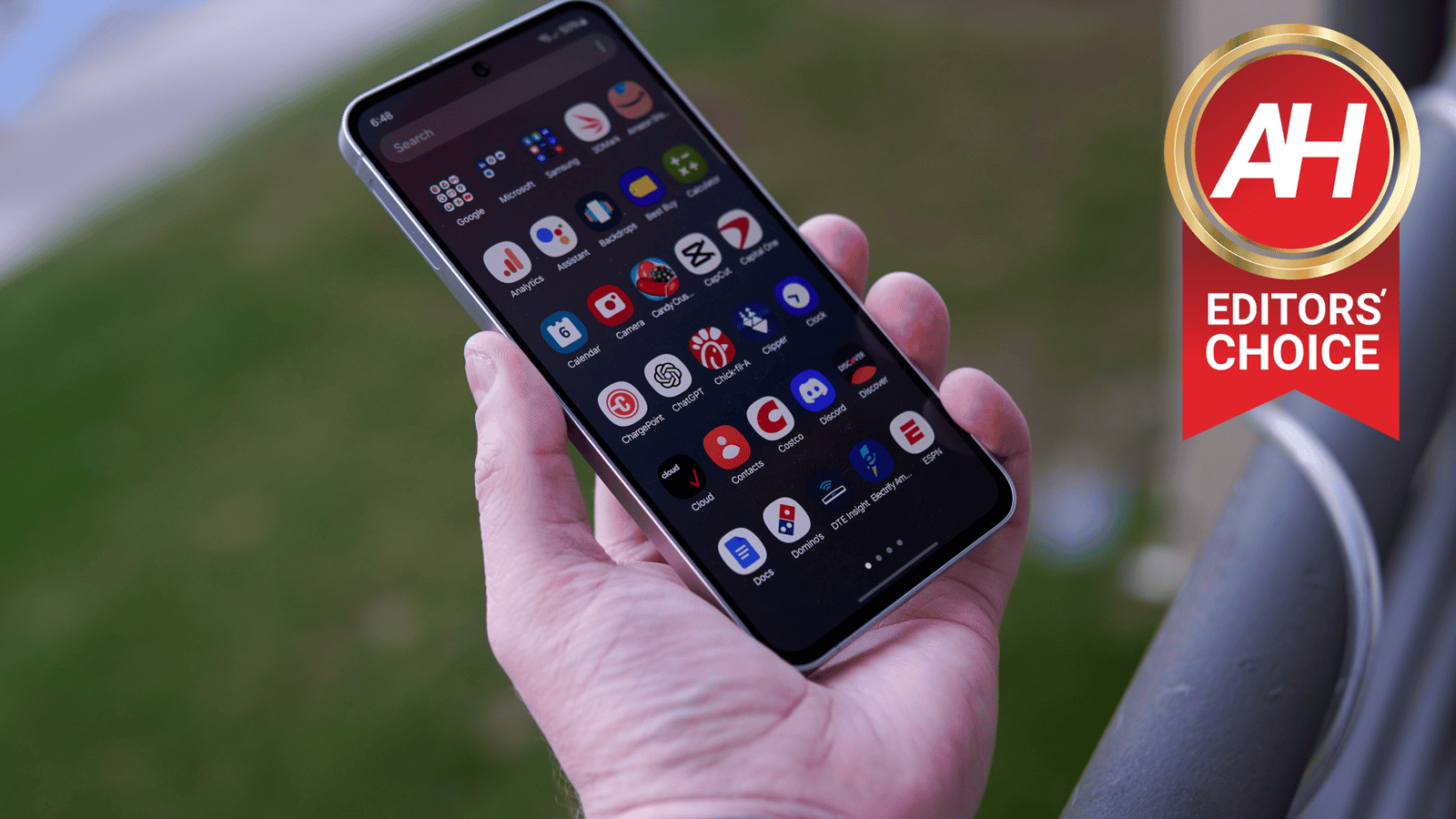
Ah, the Galaxy S24 FE. The Fan Edition of the Galaxy S24 lineup. This phone always comes out at a pretty odd time, and seems like the red-headed stepchild of the flagship range. Why? It’s pretty simple. It comes out just a few months before the lineup gets refreshed – this time around, the Galaxy S25 is expected in January, so only three months out. It’s also a lower-end model, despite using the Galaxy S24 name. Though, this year, Samsung did make some larger changes. Including giving it a larger display (the same size as Galaxy S24 Plus), and an Exynos chipset, instead of a year or two old Snapdragon chip.
While the Galaxy S24 FE does look a lot like the Galaxy A55, it does have quite a few upgrades that make it a much better phone. Like a larger and brighter display, a faster processor, more RAM, though it does have a smaller battery. However, the real question is whether it is worth the $649 asking price from Samsung.
Samsung Galaxy S24 FE Review: Hardware and Design
The Galaxy S24 FE design looks pretty similar to other Samsung phones that have launched in the past couple of years. It’s their design identity, so of course it’s going to look similar. That includes the flat back, flat sides, and the individual camera bumps. Surprisingly, the back is covered in glass and not plastic, and uses Gorilla Victus 5 on the back, with Victus Plus on the front. This makes it pretty safe from scratches and shattering. I haven’t done any drop testing with this phone, but it does seem to do pretty well against scratches.
Samsung sells the Galaxy S24 FE in five colors: blue, graphite, gray, mint, and yellow. Our model here is the blue, which is the hero color this year. It’s a good-looking color, almost like a baby blue color. While I do prefer some darker blue colors, this one isn’t bad at all. The sides are going to be silver, thanks to the Armor Aluminum. These all make for some pretty nice upgrades to the Galaxy S24 FE this year.
In the hand, it feels, well a lot like an iPhone. Of course, that comes down to the flat sides as well as the curved corners. It’s not a bad thing, and it’s something that everyone seems to be copying these days, even Google with the Pixel 9 series. My one complaint, and it’s an old one, is to make the camera module flush with the back of the phone. This is something that Google is going to be doing with the Pixel 9a when it launches in March. The main reason for this is that the Galaxy S24 FE rocks quite a bit on a table, and dust does get stuck around these cameras when they come in and out of your pocket. Getting pretty dirty, pretty quickly. It is easy to clean, however.
On the bottom of the phone, you’ll notice there is a speaker grill, a microphone and a USB-C port. Now the first thing I noticed was that the USB-C port was not centered. This is also the case on the Galaxy Tab S10 Ultra actually, but not on the Galaxy S24 Ultra. Why isn’t it centered? The only thing I can think of is, because of the layout on the inside of the phone. But this should not affect cases, really, though we don’t have any here to really test out just yet.
Samsung Galaxy S24 FE Review: Display
If you’re looking for the best display on a smartphone, then you’ll want to keep looking, as the Galaxy S24 FE doesn’t have it – Galaxy S24 Ultra on the other hand. That being said, this display is quite good, and I’d say it’s the best in this price range (sub-$700).
This is a Samsung display, so everything I’m about to say should come as no surprise. But the display is bright, vivid and has amazing color reproduction. Watching videos on this from YouTube, Netflix, and other video apps looks absolutely stunning. Speaking of brightness, this does get up to 1,900 nits. That doesn’t sound a lot compared to what the Galaxy S24 Ultra or Google Pixel 9 Pro can do. However, it is bright enough. Using this outdoors, I had no issue seeing the display. And in our testing, we were able to get it up to about 1,500 nits. You’ll never see the 1,900 nits of peak brightness unless you’re in the perfect environment for it.

Another minor thing that you probably won’t be able to not see, is the bottom bezel. It is thicker than the sides and the top bezel, though it is barely thicker, it is somewhat noticeable. The bezels on their own are a little thick, but nothing to cry about.
Samsung Galaxy S24 FE Review: Performance
Inside the Galaxy S24 FE is the Exynos 2400e, which is one of the rare times that the US actually gets an Exynos chipset. This is a 4nm, 10-core chipset. So it’s not quite as efficient as some of the more high-end chipsets on the market. But it does clock in at over 3GHz. That’s paired with 8GB of RAM and 128GB of storage (on our unit, there is also options for 256GB and 512GB).
The Exynos 2400e has been pretty pleasant for me. The phone has performed really well, in fact there were times that I forgot this was even an Exynos-powered device. It also doesn’t really get that hot, which we’ll talk more about in our thermal testing in a bit. It runs really smoothly, which was not something I expected from the Exynos 2400e, after hearing all the horror stories from Europe about how bad Exynos is over there.
Even in gaming, the Exynos 2400e performed really well, and when you see the benchmarks, you’ll see why. I’ve played both Genshin Impact and Wild Rift on here with almost no issues. It’s been a very pleasant experience all around.
Benchmarks
As always, we are running three benchmarks on the Galaxy S24 FE. The first one is Geekbench 6. This benchmark tests the raw performance of the CPU in single-core and multi-core, as well as the GPU. And I have to say the scores here are pretty impressive. On the single-core, it scored 2,111 and multi-core was 6,478. That’s pretty similar to the Galaxy S24 Ultra with the Snapdragon 8 Gen 3 for Galaxy, and a huge upgrade over the Galaxy S23 FE. On the GPU side, it hit a score of 15,309 which is nearly 3x higher than the Galaxy S23 FE, and about 30% higher than the Galaxy S24 Ultra. In fact, it’s the highest GPU score we’ve seen on any Android device, only the iPhones have been able to beat it (quite easily too). That explains why this phone works so well in gaming.

The next benchmark we run is 3DMark Wildlife Extreme Stress Test, which will push the device to its limits and tell us how well it can sustain the performance. This is a twofer as we also use this as a thermal test, since this is about the hottest your phone will ever get. With this test, you get a Best Loop score, a Lowest Loop and from the 20 loops that are run, a stability percentage is made. For the best Loop, it scored 3,475 which is good, but not the best. The lowest loop was 2,269 and that brought the stability to 65.3% which is actually really impressive. Many phones are closer to 50%, including the Galaxy S24 Ultra.
Finally, we run a third benchmark that is pretty tough to “cheat” on. And that is video exporting. Essentially, we load up a 60-second video and then export it, timing how long it takes to export. On the Galaxy S24 FE, this test was done in just 6.8 seconds. That’s a pretty good improvement over the Galaxy S23 FE which did the same test in 14.58 seconds, and even over the Galaxy S24 Ultra which did it in 7.75 seconds.
Thermals
For thermal testing, we do three different tests. First up is a benchmark called 3DMark Wildlife Extreme Stress Test. This is going to push your device to the limits and get it about as hot as it will ever get. So this is the extreme end of thermal testing. The next test is playing Genshin Impact for an hour at max settings and max brightness. Finally, we record video with the camera at 4K60 for 10 minutes, taking the temperature at 5 minute intervals. Here’s how the Galaxy S24 FE performed in each test. All temperatures are in Fahrenheit.
- 3DMark Wildlife Extreme Stress Test: 111.9
- Genshin Impact: 98.1
- Camera, 4K60 at 5-minutes: 89.7
- Camera, 4K60 at 10-minutes: 95.9
Samsung Galaxy S24 FE Review: Battery life and Charging
This year, Samsung included a more powerful processor, as we’ve seen from the benchmarks above, as well as a significantly larger battery. But then again, this is a much larger physical phone, going from a 6.4-inch display on the Galaxy S23 FE, to a 6.7-inch display on the Galaxy S24 FE. So how does that affect battery life? Not by that much.
In our testing with the Galaxy S24 FE, the phone lasted pretty nicely on battery. We’re looking at a full day, with around 6-7 hours of screen on time, with ease. That puts it right on par with the Galaxy S24 Ultra which is about twice as much. That’s not too shabby.

On the charging front, it is topping out at 25W, which is quite low, but expected from Samsung. Only the Galaxy S24 Ultra has faster charging at 45W, but it only sticks to 45W for a minute or two, so it’s not really that useful. Having said that, it does fully charge overnight, since the phone does last me all day long, so I’m not all that upset about how long it takes to charge.
Benchmarks
Similar to performance, we also run a couple of benchmarks on the battery and charging front. For battery life, we charge the phone up to 100% and let it sit at 100% on the charger for about an hour. To ensure that it is actually at 100%. Then we load up a video that is about 24 hours long, and run it on full screen with maximum brightness from 100% down to 1%. Then, record how long it lasted. On the Galaxy S24 FE, this lasted just under 20 hours at 19:58:40. That’s not the best, we consider anything over 20 hours to be great battery life.
On the charging front, we charge the phone from 1% or dead up to 100% and time it. If the phone comes with a charger, we use that charger. Otherwise, we use one that can charge the phone at its maximum charging speed. For the Galaxy S24 FE, it charged fully in 1 hour and 20 minutes.
Samsung Galaxy S24 FE Review: Software
The Galaxy S24 FE is launching with Android 14 and One UI 6.1.1 on top. That’s the newest version of Samsung’s software, which first debuted on the Galaxy Z Fold 6 back in July. It will get One UI 7 (with Android 15) next year, as Samsung has recently confirmed that it won’t launch until 2025, and a beta of One UI 7 will be out by the end of this year. Additionally, the Galaxy S24 FE is set to get seven years of updates. Similar to the Galaxy S24, Galaxy Z Fold 6 and Galaxy Z Flip 6 models.

On the software front, everything is pretty much what you expect from Samsung. That includes Galaxy AI. There are quite a few Galaxy AI features available here, like Photo Assist, which is one of my favorites. This will allow you to resize, move, remove or transform objects you take. This is very similar to Google’s Magic Editor, but in some instances, it’s even better. There are also features like Chat Assist, Call Assist, and Interpreter. There’s nothing new for Galaxy AI on the Galaxy S24 FE; we expect more features to come with One UI 7 on the Galaxy S25 series in January.
The software on the Galaxy S24 FE is nice and smooth, I was pleasantly surprised at how smooth this was. So if you’re worried about the software being janky or anything, don’t be. The software here is very good and runs very well on the Exynos 2400e.

Samsung Galaxy S24 FE Review: Camera
The cameras on the Galaxy S24 FE are pretty good, but the Galaxy S24 Ultra still outperforms it, as expected. On the Galaxy S24 FE, we have a 50-megapixel primary sensor, an 8-megapixel telephoto, and a 12-megapixel ultrawide on-board. That telephoto is capable of 3x optical zoom, and it’s pretty crisp. Of course, with digital zoom, you can get up to 30x, which is not as crisp as expected.
The main sensor does a pretty good job with pictures, though it does struggle quite a bit in low-light. You can check out all of the images that were taken with the Galaxy S24 FE in the gallery below. It’s a pretty solid set of cameras, but it won’t win the best camera phone of the year, as you might expect for its price.
Of course, with the Galaxy S24 FE the cameras are much more than just taking crisp photos and videos. You also get other features like Dual Record, allowing you to record with both the front and rear cameras at the same time. This is actually a feature that LG first introduced with its V series many, many years ago. And speaking of video, 8K video is here, even though Samsung never talks about it. You can do 8K30 video or up to 4K60 video. Unfortunately, the 4K120 from the Galaxy S24 Ultra did not make it over to the Galaxy S24 FE, and that likely has to do with the sensor being used here, the Galaxy S24 Ultra has a much more dense sensor at 200MP versus the 50MP sensor on the Galaxy S24 FE.
As mentioned, there are loads of AI tools available in the camera, too. Photo Assist lets you do all sorts of things with the photo, like removing objects or moving them around. There’s also Sketch to the Image, which debuted in One UI 6.1.1. This lets you draw something like a hot air balloon and have it appear in the image. Surprisingly, Samsung does a really good job with this.
Overall, the cameras are pretty good here and will get you by; just don’t expect this to be the best camera on the market.
Should you buy the Samsung Galaxy S24 FE?

Recommending the Galaxy S24 FE or not is a bit tough at this point. You see, it’s a good phone until you see the price. We’re seeing plenty of great phones at the same price or cheaper that offer better camera and software performance, like the OnePlus 12R. If Samsung had kept the Galaxy S24 FE at the Galaxy S23 FE price of $599, this would be a much easier one to recommend, but at $649, it gets up into that lower-end of the flagship range for pricing, which is where phones like OnePlus really thrive.
Of course, what Samsung has going for it here is seven years of updates, that larger display, and great battery life here.
You should buy the Samsung Galaxy S24 FE if:
- You want a good phone at a good price.
- You want Galaxy AI at a lower price, but not at a terrible experience.
- You need a phone with at least 3x zoom.
- You want a lightweight phone with good battery life.
You should not buy the Samsung Galaxy S24 FE if:
- You want a Galaxy S24 series phone, this is only a Galaxy S24 in name.
- You want the best display in a phone.
Technology
PS5 Slim consoles are $50 off ahead of Prime Day
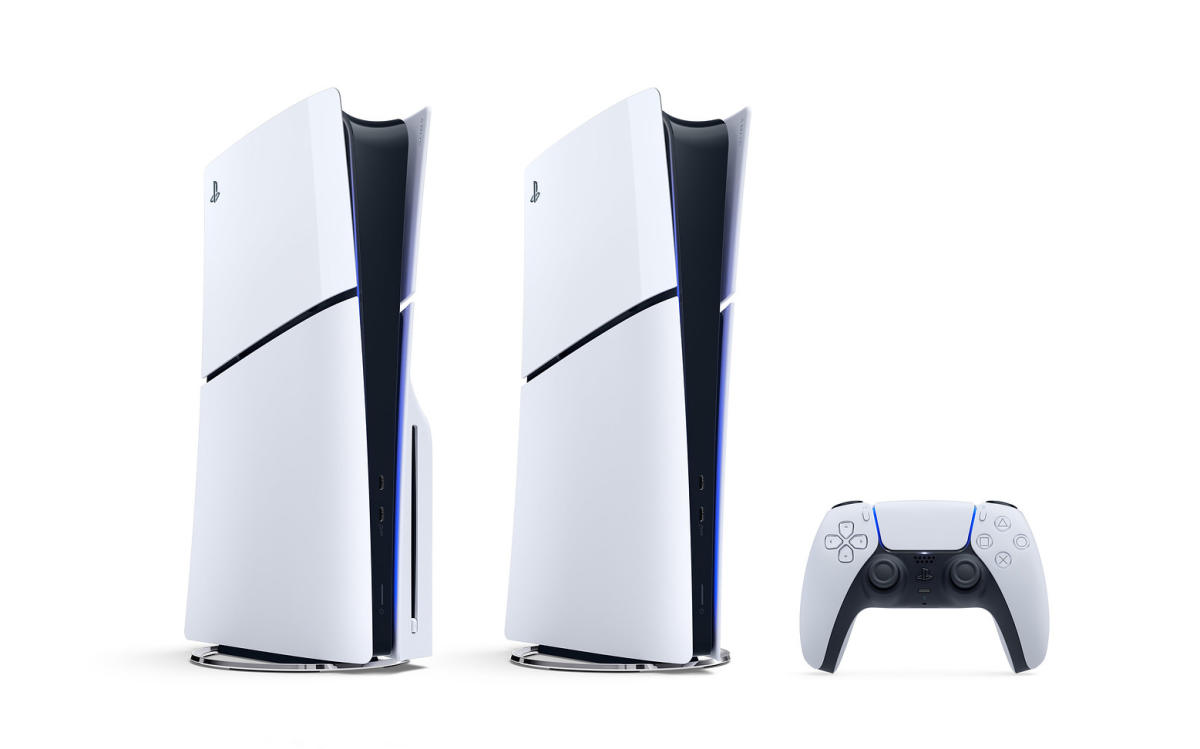
is almost upon us, but you don’t have to wait any time at all to find some good deals. Case in point: both variants of the PS5 Slim have dropped by $50, so if you’ve been holding off on making the leap to (and the is perhaps a little too on the pricey side), this is a solid discount that’s worth considering. The Digital Edition (the one without a disc drive) has dropped to $400, while the regular edition can be yours for $450.
The PS5 Slim variants have all the power of the original PS5 units but in a more slender form factor. Given how chunky those first models were, that’s nothing to sniff at.
The PS5 Slim is on sale for Prime Day, offering those who’ve been waiting to make the leap to current-gen consoles a discount worth considering.
If you buy the Slim Digital Edition and later decide that you’d like a disc drive so you can use Blu-rays, DVDs or physical editions of games on your PS5, you can pick up an . However, it’s worth noting that the add-on has been going in and out of stock in anticipation of the PS5 Pro, which doesn’t have a disc drive built in but is compatible with the attachment.
The PS5 games library is very robust at this point, thanks to killer first-party titles such as and the utterly terrific . Sony is remastering some major games that debuted on PS4 for the console too, including both chapters of and . There’s a huge selection of great third-party games to jump into as well, like the latest EA Sports FC, Madden NFL and NBA 2K games for sports fans, and . And let’s not forget the small matter of a new Call of Duty game .
So, if you do pick up a PS5 Slim, you’ll have a ton of games to buy and check out. That said, a PS Plus Extra or Premium subscription might be what you want, as that will give you access to a large library of titles right out of the gate.
Follow @EngadgetDeals on Twitter for the latest tech deals and buying advice, and stay tuned to Engadget.com for all of the best tech deals coming out of October Prime Day 2024.
Servers computers
ODC – Outdoor Cabinet di Indonesia untuk Install Perangkat Elektronik di Luar Ruangan.
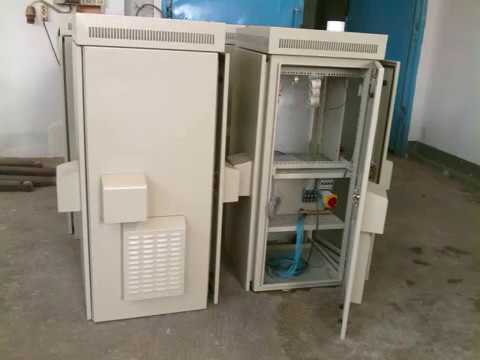
Outdoor Cabinet atau ODC adalah solusi aman untuk penempatan perangkat Elektronik di luar ruangan yg rentan terhadap cuaca baik Hujan, Panas, angin, Debu dll nya.
Terda[at Railing 19″/ Rackmount untuk penempatan perangkat rack mount serta bisa di pasang Fixedshelft atau Sliding untuk penempatan perangkat non Rackmount.
Saat ini kami hanya ada ukuran kecil MAX 16U saja.
Detail please WA 0812 9919892 (William)
Pabrik Outdoor Cabinet Klik: http://outdoorcabinetmurah.blogspot.com/
Solusi Total Cabinet Tahan Hujan .. http://rackservermurah.blogspot.com/
#ODC #outdoorcabinet #Cabinettahancuaca #Tahanair .
source
Technology
AI Platform Alliance brings system and chip companies together
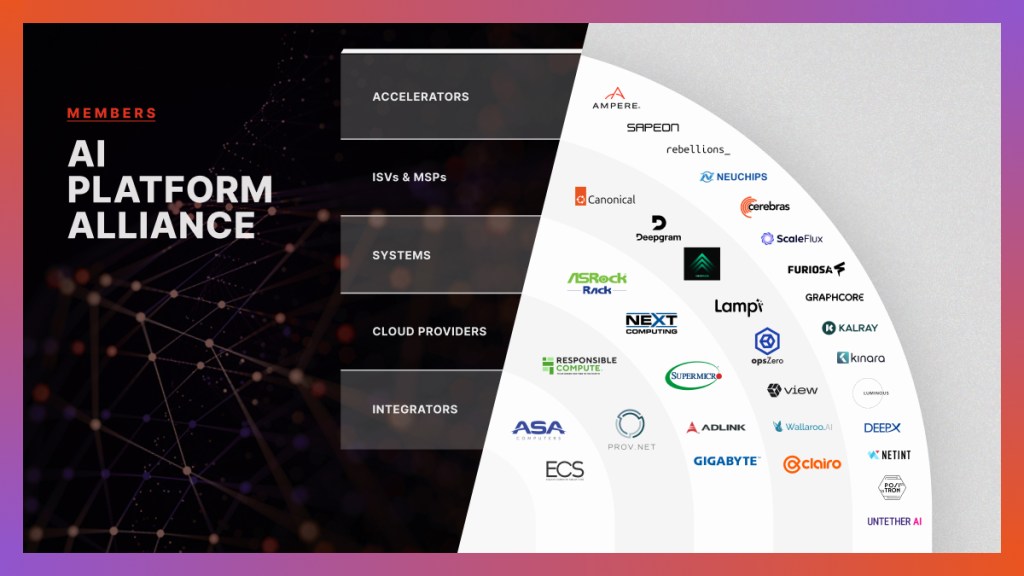
The AI Platform Alliance announced today the expansion of its consortium aimed at combining the key chips and hardware required to operate a modern AI compute service with more open, economical and sustainable solutions.
Formed last year at the Open Compute Conference, the group was initially comprised of AI accelerator companies, or companies that make chips for accelerating AI software. The alliance has now expanded to include cloud managed service providers, system suppliers and integrators, and software companies, reflecting a maturing ecosystem for the most demanding AI inference use cases.
The evolving alliance ecosystem has focused on providing practical and easily adoptable solutions through a new marketplace now available on the AI Platform Alliance website. The solutions offered by alliance members increase both the power and cost efficiency of AI inference while delivering better overall performance than more commonly seen solutions featuring GPUs today.
New companies joining the AI Platform Alliance include Adlink, ASRock Rack, ASA Computers, Canonical, Clairo.ai, Deepgram, DeepX, ECS/Equus, Giga Computing (Gigabyte), Kamiwaza.ai, Lampi.ai, Netint, NextComputing, opsZero, Positron, Prov.net/Alpha3, Responsible Compute, Supermicro, Untether, View IO and Wallaroo.ai.
Join us for GamesBeat Next!
GamesBeat Next is almost here! GB Next is the premier event for product leaders and leadership in the gaming industry. Coming up October 28th and 29th, join fellow leaders and amazing speakers like Matthew Bromberg (CEO Unity), Amy Hennig (Co-President of New Media Skydance Games), Laura Naviaux Sturr (GM Operations Amazon Games), Amir Satvat (Business Development Director Tencent), and so many others. See the full speaker list and register here.
These companies join founding members that included Ampere Computing, Cerebras Systems, Furiosa, Graphcore, Kalray, Kinara, Luminous, Neuchips, Rebellions and Sapeon.
The members include more than 30 organizations spanning five key sectors of the industry supplying products and services to the burgeoning AI inference industry.
The AI Platform Alliance was formed specifically to promote better collaboration and openness when it comes to AI. This solidarity of vision comes at a pivotal moment not just for the technology industry, but for the world at large. The explosion of AI has created unprecedented demand for compute power to not only run AI algorithms, but also to pull together all the systems, applications and services required to implement a modern AI-0 enabled digital service.
While solutions to date have mainly addressed AI training of ever more powerful models, AI inference can require up to 10 times more traditional compute support processes to run a complex AI-enabled service. These stacks require an ecosystem of technology, services, and applications working together seamlessly to integrate best in class ingredients and easy to adopt recipes to scale AI inference use cases.
AI Platform Alliance members will work together to validate joint AI solutions that provide a diverse set of alternatives to vertically oriented GPU-based status quo platforms. By developing these solutions as a community, this group will accelerate the pace of AI innovation while making AI platforms more open and transparent, increasing the capacity of AI to solve real-world problems, accelerating the rate of practical adoption, and delivering environmentally friendly and socially responsible infrastructure at scale.
Various members of the AI Platform Alliance are expected to showcase solutions at Yotta 2024 in Las Vegas October 7 to October 9. The AI Platform Alliance is open today to potential new members looking to change the AI status quo. Companies interested in joining can access more information and apply here.
Source link
Science & Environment
SpaceX launches European asteroid probe as hurricane weather closes in
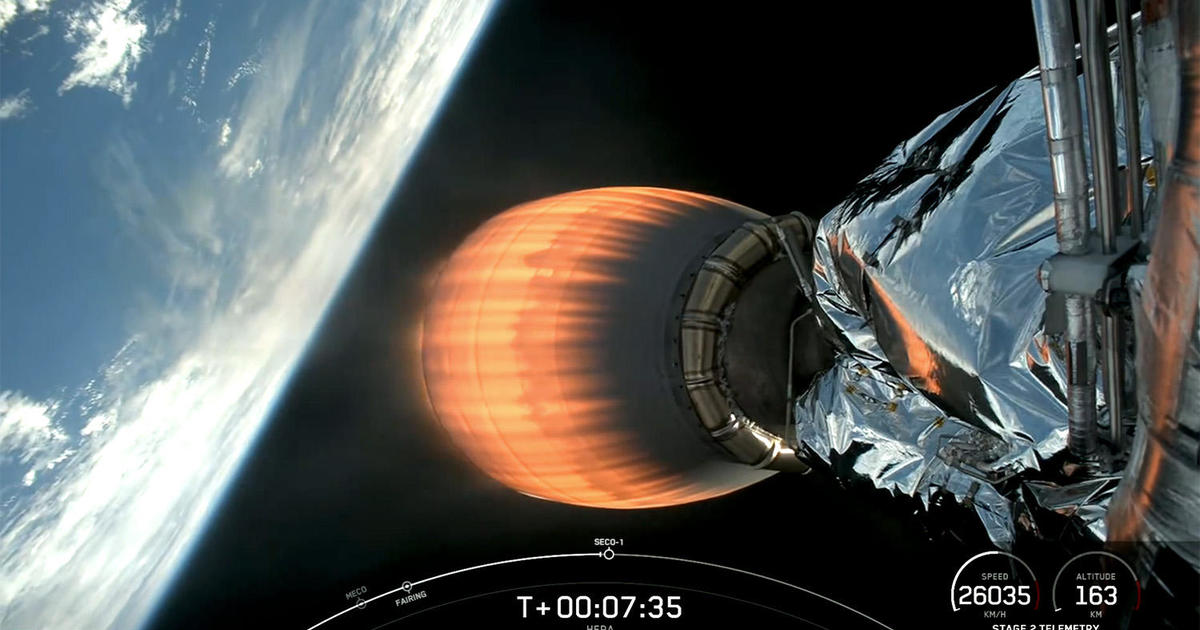
Dodging stormy weather ahead of Hurricane Milton, SpaceX launched the European Space Agency’s $398 million Hera probe Monday on a follow-up flight to find out precisely how a moonlet orbiting a small asteroid was affected by the high-speed impact of NASA’s DART probe in 2022.
The launching was in doubt until the last moment, with thick clouds and rain across Florida’s Space Coast, fueled by moisture pulled in by the intensifying hurricane to the west.
Adam Bernstein/Spaceflight Now
But as the launch time approached, conditions improved enough to satisfy launch safety rules and NASA managers cleared the rocket for takeoff. Right on time, at 10:52 a.m. EDT, the Falcon 9’s first stage engines ignited with a burst of flame and the booster climbed smoothly away from the Cape Canaveral Space Force Station.
Liftoff came in the nick of time for several hundred European Space Agency managers, scientists, engineers and journalists who flew to Florida to watch the launch.
SpaceX
Hurricane Milton is expected to bring extreme winds and torrential rain to Florida’s Space Coast by Wednesday, a forecast that prompted NASA to stand down on plans to launch the agency’s $5.2 billion Europa mission to Jupiter and its ice-covered moon Europa on Thursday.
Instead, NASA announced late Sunday the rocket and it costly payload will remain in a SpaceX hangar at the base of launch pad 39A at the Kennedy Space Center until Milton passes by and safety personnel have a chance to inspect spaceport facilities for signs of damage.
The weather also has thrown a wrench into NASA’s plans to bring three NASA astronauts and a Russian cosmonaut back to Earth after a 217-day stay aboard the International Space Station.
Crew 8 commander Matthew Dominick, Mike Barratt, Jeanette Epps and cosmonaut Alexander Grebenkin had planned to undock Monday.
But NASA announced Sunday their departure would be delayed to at least Thursday because of the expected bad weather. Crew Dragon ferry ships require calm winds and seas in the Gulf of Mexico or the Atlantic Ocean to permit a safe splashdown.
Mission to an asteroid and its moon
In the meantime, despite an initially grim forecast, SpaceX was able to take advantage of a break in the weather to kick off Hera’s two-year voyage to the asteroid Didymos and its small moon Dimorphos.
ESA
The DART impact altered the 11-hour 55-minute orbit of the 495-foot-wide Dimorphos, shaving 31 minutes off the time needed to complete one trip around the parent asteroid Didymos. The test confirmed the feasibility of someday nudging a threatening asteroid off course before a possibly devastating Earth impact.
But a successful deflection would depend on a variety of factors, including when the threat was detected — the farther out, the better — and the asteroid’s composition.
ESA’s Hera probe will orbit the Didymos system and study both asteroids in detail with 11 high-tech cameras and other instruments, deploying two small “cubesat” satellites to study the interior structure of Dimorphos, assess the DART impact crater, the moon’s internal structure and composition.
The goal of the Asteroid Impact and Deflection Assessment, or AIDA, is to better understand the techniques that might be needed to prevent an Earth impact.
“The good news is no dinosaur killer is on its way to Earth during the next 100 years,” said Richard Moissl, director of ESA’s Planetary Defense Office. “We are safe from that scenario, but there are smaller ones, especially in this dangerous size, 50 meters and upwards, where it really threatens human life on the ground.”
ESA
The first step in planetary defense is detection, he said, followed by detailed observations to pin down the asteroid’s orbit and determine whether a collision with Earth is a possibility.
“For small objects, civil protection is the way to go,” he said. “But 50 meters (160 feet across) and larger, you really want this thing not to hit Earth, not to threaten population centers. And then step three comes into play, deflection.
“But again, it’s always good to know what you’re up against. And this is where Hera and DART come into play.”
Unlike most Falcon 9 flights, there were no plans to recover the rocket’s first stage. To give Hera the velocity need to break free of Earth gravity, the Falcon 9’s two stages were programmed to use up all of their propellants, leaving none in reserve for a powered first stage landing.
The flight plan called for two firings of the upper stage engine before Hera’s release to fly on its own one hour and 16 minutes after liftoff.
To reach Didymos and Dimorphos, Hera will have to execute a deep space thruster firing in November to set up a gravity-assist flyby of Mars in March, sailing within about 3,700 miles of the red planet. Along the way, the spacecraft will pass within 620 miles of the small martian moon Deimos.
“By swinging through the gravitational field of Mars in its direction of movement, the spacecraft gains added velocity for its onward journey,” Michael Kueppers, ESA’s project scientist, said on the agency’s website.
“This close encounter is not part of Hera’s core mission, but we will have several of our science instruments activated anyway. It gives us another chance to calibrate our instruments and potentially to make some scientific discoveries.”
After another deep space maneuver in February 2026, Hera will finally be on course to slip into orbit around Didymos the following October. The mission is expected to last about six months.
Servers computers
New Server Racking system #tech #sth #servethehome #itguy #server #homelab #qnap #shorts #networking
Technology
Execs from Stoke Space and Relativity Space join Disrupt 2024

The future of space is ripe for reinvention, and TechCrunch Disrupt 2024 is bringing together two visionaries determined to reshape how we reach and operate in orbit.
Join Kelly Hennig, COO of Stoke Space, and Muhammad “Mo” Shahzad, president and CFO of Relativity Space, on the Space Stage as they explore how emerging technologies, software, and automation will redefine the future of space access. Discover how these industry leaders are navigating the challenges of the growing space industry to turn ambitious visions into reality.
The demand for launch capabilities continues to grow. Though the past decade has brought considerable advancements, significant opportunities remain untapped beyond rockets and vehicles. With insights from Hennig and Shahzad, attendees will explore how business acumen, engineering ingenuity, and operational scalability are converging to set new standards for launch success and sustainability. This includes the recognition that building strong organizational cultures — where informed decision-making aligns with calculated risk — is essential for empowering the achievement of ambitious objectives in this rapidly evolving industry.
This conversation isn’t just about technological breakthroughs; it’s about the strategic, organizational, and cultural shifts that are crucial for propelling the industry forward.
Meet the speakers
Kelly Hennig, COO, Stoke Space
Kelly Hennig is driving innovation in the reusable rocket sector, offering affordable, on-demand access to orbit for the satellite industry. Before joining Stoke Space, Kelly held senior engineering roles at Raytheon and Northrop Grumman, where she led development programs and captured major contracts, establishing her as a respected figure in aerospace. She has 10 patents, five trade secrets, and several distinctions for engineering excellence, showcasing her ability to merge technical knowledge with strategic execution.
Muhammad “Mo” Shahzad, president and CFO, Relativity Space
Muhammad “Mo” Shahzad brings more than 20 years of finance and capital markets expertise to his leadership role. Responsible for the company’s growth and strategy, Mo has overseen Relativity Space’s transformation into a space industry powerhouse — raising over $1.3 billion in funding and increasing the company’s headcount tenfold. His leadership spans sales, business development, financial planning, and risk management, reflecting his multifaceted approach to building a sustainable and scalable enterprise.
Don’t miss this discussion at Disrupt 2024
The future of space launch will be defined by those who dare to push boundaries and innovate beyond what’s possible today. At Disrupt 2024, you’ll hear firsthand from the industry’s boldest leaders, whose expertise and vision are setting the course for what comes next. Don’t miss this opportunity to connect, learn, and be inspired by the pioneers who are charting the path forward for space exploration. Secure your ticket now before prices rise at the door. This is one conversation you won’t want to miss.
-

 Womens Workouts2 weeks ago
Womens Workouts2 weeks ago3 Day Full Body Women’s Dumbbell Only Workout
-

 Science & Environment3 weeks ago
Science & Environment3 weeks agoHow to unsnarl a tangle of threads, according to physics
-

 Science & Environment3 weeks ago
Science & Environment3 weeks agoHyperelastic gel is one of the stretchiest materials known to science
-

 Science & Environment3 weeks ago
Science & Environment3 weeks agoMaxwell’s demon charges quantum batteries inside of a quantum computer
-

 Technology3 weeks ago
Technology3 weeks agoWould-be reality TV contestants ‘not looking real’
-

 Science & Environment3 weeks ago
Science & Environment3 weeks ago‘Running of the bulls’ festival crowds move like charged particles
-

 Science & Environment3 weeks ago
Science & Environment3 weeks agoHow to wrap your mind around the real multiverse
-

 News2 weeks ago
News2 weeks agoOur millionaire neighbour blocks us from using public footpath & screams at us in street.. it’s like living in a WARZONE – WordupNews
-

 Science & Environment3 weeks ago
Science & Environment3 weeks agoSunlight-trapping device can generate temperatures over 1000°C
-

 Science & Environment3 weeks ago
Science & Environment3 weeks agoQuantum ‘supersolid’ matter stirred using magnets
-

 Science & Environment3 weeks ago
Science & Environment3 weeks agoITER: Is the world’s biggest fusion experiment dead after new delay to 2035?
-

 Science & Environment3 weeks ago
Science & Environment3 weeks agoLiquid crystals could improve quantum communication devices
-

 Science & Environment3 weeks ago
Science & Environment3 weeks agoQuantum forces used to automatically assemble tiny device
-
News3 weeks ago
the pick of new debut fiction
-

 Science & Environment3 weeks ago
Science & Environment3 weeks agoPhysicists are grappling with their own reproducibility crisis
-

 Science & Environment3 weeks ago
Science & Environment3 weeks agoWhy this is a golden age for life to thrive across the universe
-

 News3 weeks ago
News3 weeks agoYou’re a Hypocrite, And So Am I
-

 Sport3 weeks ago
Sport3 weeks agoJoshua vs Dubois: Chris Eubank Jr says ‘AJ’ could beat Tyson Fury and any other heavyweight in the world
-

 Science & Environment3 weeks ago
Science & Environment3 weeks agoTime travel sci-fi novel is a rip-roaringly good thought experiment
-

 Science & Environment3 weeks ago
Science & Environment3 weeks agoLaser helps turn an electron into a coil of mass and charge
-

 Science & Environment3 weeks ago
Science & Environment3 weeks agoCaroline Ellison aims to duck prison sentence for role in FTX collapse
-

 Science & Environment3 weeks ago
Science & Environment3 weeks agoNuclear fusion experiment overcomes two key operating hurdles
-

 Technology1 week ago
Technology1 week ago‘From a toaster to a server’: UK startup promises 5x ‘speed up without changing a line of code’ as it plans to take on Nvidia, AMD in the generative AI battlefield
-

 Football1 week ago
Football1 week agoFootball Focus: Martin Keown on Liverpool’s Alisson Becker
-
Business1 week ago
Eurosceptic Andrej Babiš eyes return to power in Czech Republic
-

 Science & Environment3 weeks ago
Science & Environment3 weeks agoRethinking space and time could let us do away with dark matter
-

 MMA1 week ago
MMA1 week agoConor McGregor challenges ‘woeful’ Belal Muhammad, tells Ilia Topuria it’s ‘on sight’
-

 Science & Environment3 weeks ago
Science & Environment3 weeks agoNerve fibres in the brain could generate quantum entanglement
-

 News3 weeks ago
News3 weeks ago▶️ Hamas in the West Bank: Rising Support and Deadly Attacks You Might Not Know About
-
Business1 week ago
Should London’s tax exiles head for Spain, Italy . . . or Wales?
-

 News3 weeks ago
News3 weeks ago▶️ Media Bias: How They Spin Attack on Hezbollah and Ignore the Reality
-

 News3 weeks ago
News3 weeks agoNew investigation ordered into ‘doorstep murder’ of Alistair Wilson
-

 Science & Environment3 weeks ago
Science & Environment3 weeks agoFuture of fusion: How the UK’s JET reactor paved the way for ITER
-

 Science & Environment2 weeks ago
Science & Environment2 weeks agoX-rays reveal half-billion-year-old insect ancestor
-

 News3 weeks ago
News3 weeks agoIsrael strikes Lebanese targets as Hizbollah chief warns of ‘red lines’ crossed
-

 Science & Environment3 weeks ago
Science & Environment3 weeks agoA new kind of experiment at the Large Hadron Collider could unravel quantum reality
-

 Science & Environment3 weeks ago
Science & Environment3 weeks agoA slight curve helps rocks make the biggest splash
-

 Science & Environment3 weeks ago
Science & Environment3 weeks agoUK spurns European invitation to join ITER nuclear fusion project
-

 CryptoCurrency3 weeks ago
CryptoCurrency3 weeks agoCardano founder to meet Argentina president Javier Milei
-

 News2 weeks ago
News2 weeks agoWhy Is Everyone Excited About These Smart Insoles?
-

 Science & Environment2 weeks ago
Science & Environment2 weeks agoMeet the world's first female male model | 7.30
-

 Technology2 weeks ago
Technology2 weeks agoRobo-tuna reveals how foldable fins help the speedy fish manoeuvre
-

 Technology2 weeks ago
Technology2 weeks agoGet ready for Meta Connect
-
Business3 weeks ago
JPMorgan in talks to take over Apple credit card from Goldman Sachs
-

 CryptoCurrency3 weeks ago
CryptoCurrency3 weeks agoBitcoin bulls target $64K BTC price hurdle as US stocks eye new record
-

 Womens Workouts2 weeks ago
Womens Workouts2 weeks agoBest Exercises if You Want to Build a Great Physique
-

 Womens Workouts2 weeks ago
Womens Workouts2 weeks agoEverything a Beginner Needs to Know About Squatting
-

 News2 weeks ago
News2 weeks agoFour dead & 18 injured in horror mass shooting with victims ‘caught in crossfire’ as cops hunt multiple gunmen
-

 Servers computers2 weeks ago
Servers computers2 weeks agoWhat are the benefits of Blade servers compared to rack servers?
-

 Technology1 week ago
Technology1 week agoQuantum computers may work better when they ignore causality
-

 Technology1 week ago
Technology1 week agoThe best robot vacuum cleaners of 2024
-

 Health & fitness1 week ago
Health & fitness1 week agoThe 7 lifestyle habits you can stop now for a slimmer face by next week
-

 CryptoCurrency3 weeks ago
CryptoCurrency3 weeks agoEthereum is a 'contrarian bet' into 2025, says Bitwise exec
-

 Health & fitness3 weeks ago
Health & fitness3 weeks agoThe secret to a six pack – and how to keep your washboard abs in 2022
-

 Science & Environment3 weeks ago
Science & Environment3 weeks agoQuantum time travel: The experiment to ‘send a particle into the past’
-

 Science & Environment3 weeks ago
Science & Environment3 weeks agoBeing in two places at once could make a quantum battery charge faster
-

 Science & Environment3 weeks ago
Science & Environment3 weeks agoWhy we need to invoke philosophy to judge bizarre concepts in science
-

 CryptoCurrency3 weeks ago
CryptoCurrency3 weeks agoBitcoin miners steamrolled after electricity thefts, exchange ‘closure’ scam: Asia Express
-

 CryptoCurrency3 weeks ago
CryptoCurrency3 weeks agoDorsey’s ‘marketplace of algorithms’ could fix social media… so why hasn’t it?
-

 CryptoCurrency3 weeks ago
CryptoCurrency3 weeks agoDZ Bank partners with Boerse Stuttgart for crypto trading
-

 CryptoCurrency3 weeks ago
CryptoCurrency3 weeks agoLow users, sex predators kill Korean metaverses, 3AC sues Terra: Asia Express
-
Politics2 weeks ago
UK consumer confidence falls sharply amid fears of ‘painful’ budget | Economics
-

 Science & Environment2 weeks ago
Science & Environment2 weeks agoCNN TÜRK – 🔴 Canlı Yayın ᴴᴰ – Canlı TV izle
-

 Womens Workouts2 weeks ago
Womens Workouts2 weeks ago3 Day Full Body Toning Workout for Women
-

 Travel2 weeks ago
Travel2 weeks agoDelta signs codeshare agreement with SAS
-

 Politics2 weeks ago
Politics2 weeks agoHope, finally? Keir Starmer’s first conference in power – podcast | News
-

 News2 weeks ago
News2 weeks agoUS Newspapers Diluting Democratic Discourse with Political Bias
-

 Sport1 week ago
Sport1 week agoWatch UFC star deliver ‘one of the most brutal knockouts ever’ that left opponent laid spark out on the canvas
-

 Sport3 weeks ago
Sport3 weeks agoUFC Edmonton fight card revealed, including Brandon Moreno vs. Amir Albazi headliner
-

 Technology3 weeks ago
Technology3 weeks agoiPhone 15 Pro Max Camera Review: Depth and Reach
-

 Science & Environment3 weeks ago
Science & Environment3 weeks agoHow one theory ties together everything we know about the universe
-

 News3 weeks ago
News3 weeks agoBrian Tyree Henry on voicing young Megatron, his love for villain roles
-

 Health & fitness3 weeks ago
Health & fitness3 weeks agoThe maps that could hold the secret to curing cancer
-

 Technology3 weeks ago
Technology3 weeks agoThe ‘superfood’ taking over fields in northern India
-

 Science & Environment3 weeks ago
Science & Environment3 weeks agoTiny magnet could help measure gravity on the quantum scale
-

 Science & Environment3 weeks ago
Science & Environment3 weeks agoA tale of two mysteries: ghostly neutrinos and the proton decay puzzle
-

 Science & Environment3 weeks ago
Science & Environment3 weeks agoHow do you recycle a nuclear fusion reactor? We’re about to find out
-

 CryptoCurrency3 weeks ago
CryptoCurrency3 weeks agoRedStone integrates first oracle price feeds on TON blockchain
-

 CryptoCurrency3 weeks ago
CryptoCurrency3 weeks agoBlockdaemon mulls 2026 IPO: Report
-
Politics3 weeks ago
‘Appalling’ rows over Sue Gray must stop, senior ministers say | Sue Gray
-

 CryptoCurrency3 weeks ago
CryptoCurrency3 weeks agoCoinbase’s cbBTC surges to third-largest wrapped BTC token in just one week
-

 MMA2 weeks ago
MMA2 weeks agoRankings Show: Is Umar Nurmagomedov a lock to become UFC champion?
-

 TV2 weeks ago
TV2 weeks agoCNN TÜRK – 🔴 Canlı Yayın ᴴᴰ – Canlı TV izle
-

 CryptoCurrency3 weeks ago
CryptoCurrency3 weeks agoCrypto scammers orchestrate massive hack on X but barely made $8K
-

 CryptoCurrency3 weeks ago
CryptoCurrency3 weeks agoDecentraland X account hacked, phishing scam targets MANA airdrop
-

 CryptoCurrency3 weeks ago
CryptoCurrency3 weeks agoTelegram bot Banana Gun’s users drained of over $1.9M
-

 CryptoCurrency3 weeks ago
CryptoCurrency3 weeks agoVonMises bought 60 CryptoPunks in a month before the price spiked: NFT Collector
-

 CryptoCurrency3 weeks ago
CryptoCurrency3 weeks agoSEC asks court for four months to produce documents for Coinbase
-

 CryptoCurrency3 weeks ago
CryptoCurrency3 weeks ago‘Silly’ to shade Ethereum, the ‘Microsoft of blockchains’ — Bitwise exec
-

 CryptoCurrency3 weeks ago
CryptoCurrency3 weeks agoVitalik tells Ethereum L2s ‘Stage 1 or GTFO’ — Who makes the cut?
-

 CryptoCurrency3 weeks ago
CryptoCurrency3 weeks ago‘No matter how bad it gets, there’s a lot going on with NFTs’: 24 Hours of Art, NFT Creator
-
Business3 weeks ago
Thames Water seeks extension on debt terms to avoid renationalisation
-
Business3 weeks ago
How Labour donor’s largesse tarnished government’s squeaky clean image
-

 News3 weeks ago
News3 weeks agoBrian Tyree Henry on voicing young Megatron, his love for villain roles
-
News2 weeks ago
The Project Censored Newsletter – May 2024
-

 Womens Workouts2 weeks ago
Womens Workouts2 weeks agoHow Heat Affects Your Body During Exercise
-

 Womens Workouts2 weeks ago
Womens Workouts2 weeks agoKeep Your Goals on Track This Season
-

 Womens Workouts2 weeks ago
Womens Workouts2 weeks agoWhich Squat Load Position is Right For You?
-

 MMA1 week ago
MMA1 week agoRoberto Satoshi compares losses to Francis Ngannou’s boxing run as he finally defends RIZIN title
-
Business6 days ago
Ukraine faces its darkest hour

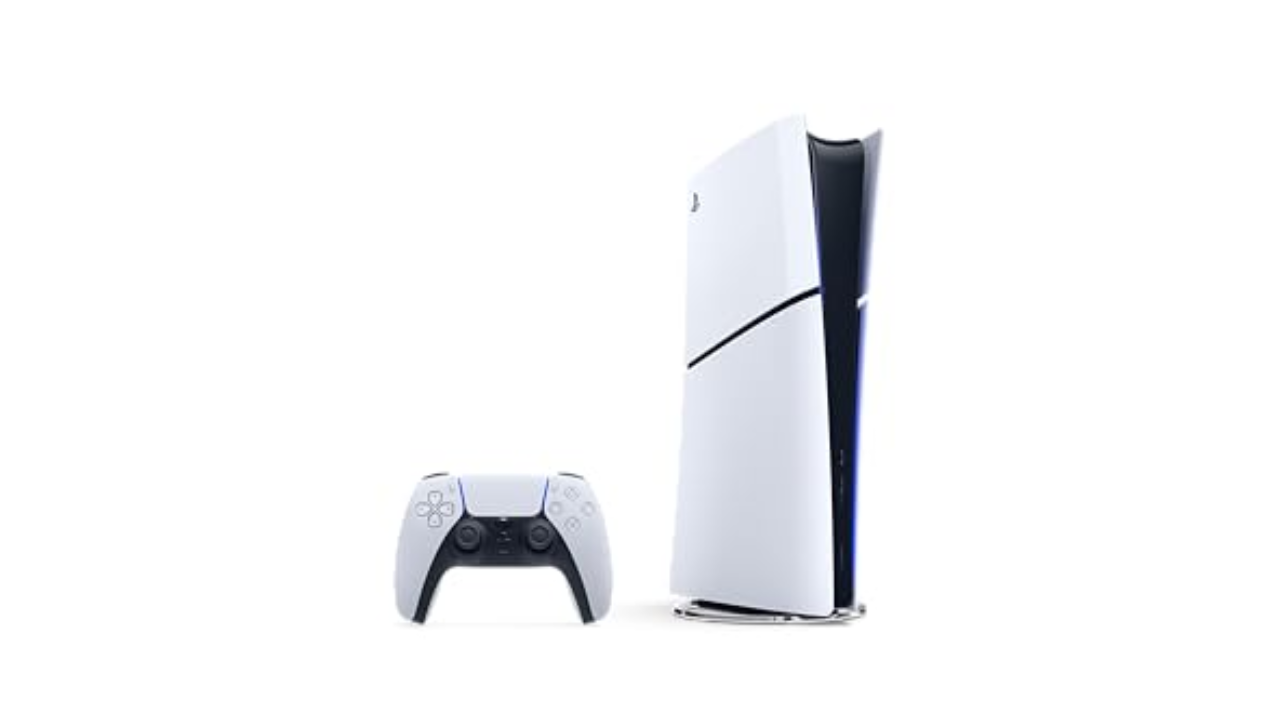
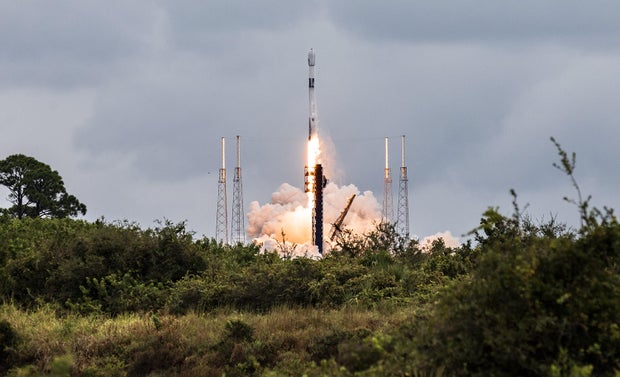
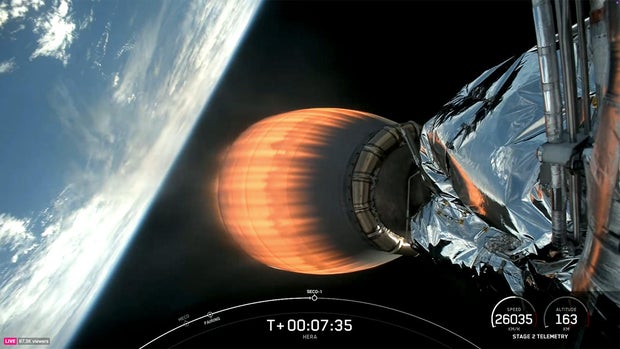
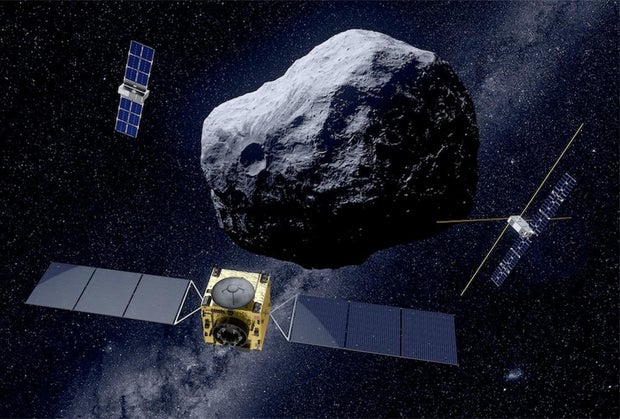
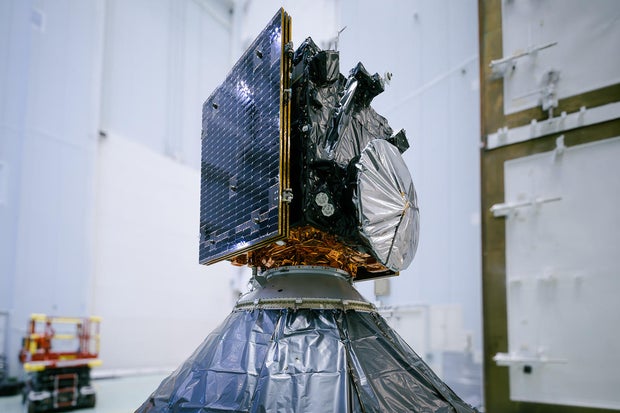
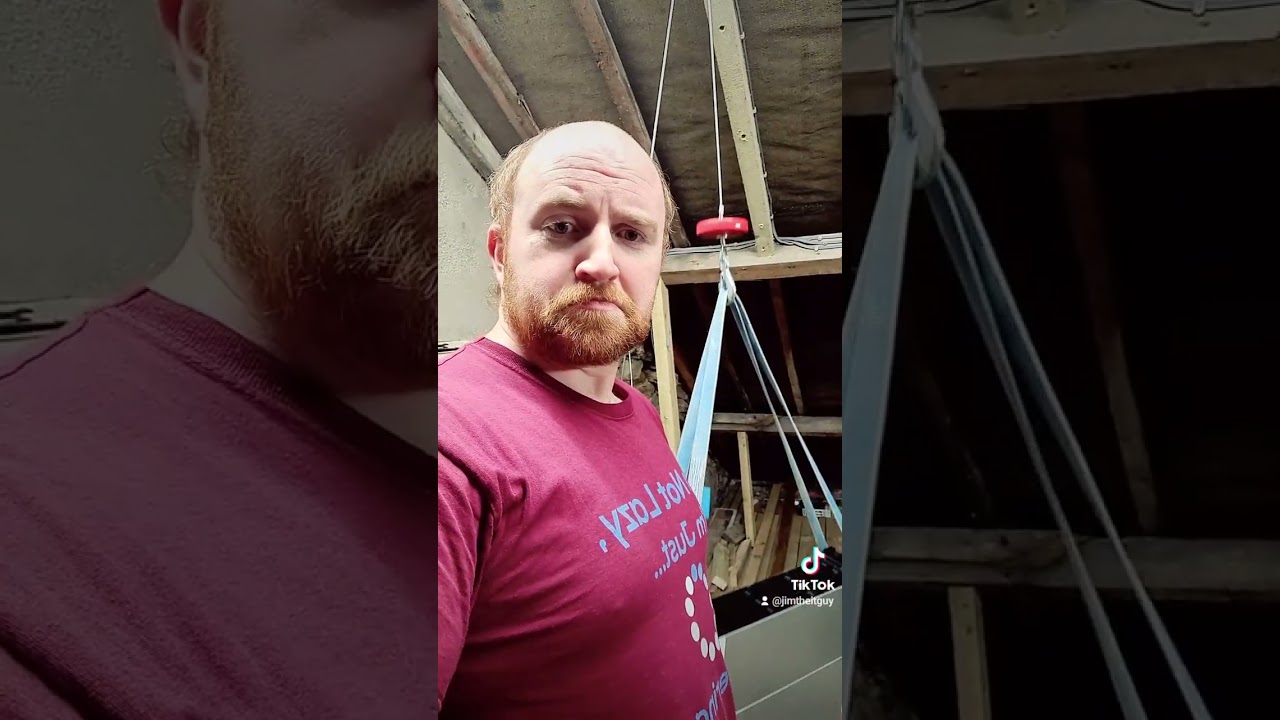
You must be logged in to post a comment Login